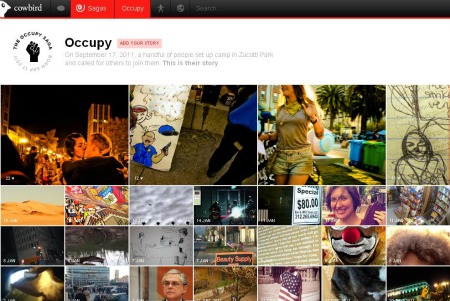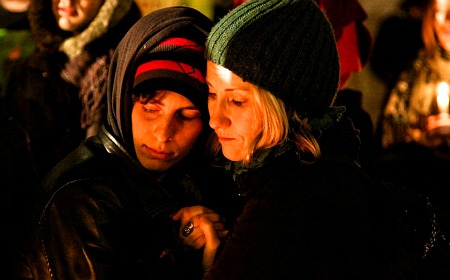Telling a brief story around a single photograph seems like such a simple idea. Add to that a sharing element and you think: another clever web platform to distract and amuse us. But there’s a lot more to Cowbird.
The interface is beautiful, as one would expect from Jonathan Harris, Cowbird’s creator. The Web artist and programmer behind the 2006 Web project “We Feel Fine,” Harris thinks big. His goal with Cowbird: nothing less than to create “the world’s first library of human experience,” according to the site.
While you can add audio, the focus is on the image, which floats front and center, full screen, with the accompanying story beneath in plain text. To get a feel, you’ll need to spend some time with the stories posted thus far, as the site suggests.
A chance encounter by a swimmer. The gaze of a much-loved sister recently lost. A close up of an infant during a doctor’s visit at the milestone of one week of life. These were among the featured stories this day.
 Multiple entries relate to Occupy Wall Street, a theme that constitutes a “saga” here (a larger goal of Cowbird is to provide a platform for crowdsourced journalism). But the same tagging function, along with favoriting and following other users, facilitates connections across all stories on Cowbird. You can also map your stories, and dating them enables you to generate a timeline, a visual diary of sorts. Or click a timeline icon, and view a chronology of the entire catalog of Cowbird entries.
Multiple entries relate to Occupy Wall Street, a theme that constitutes a “saga” here (a larger goal of Cowbird is to provide a platform for crowdsourced journalism). But the same tagging function, along with favoriting and following other users, facilitates connections across all stories on Cowbird. You can also map your stories, and dating them enables you to generate a timeline, a visual diary of sorts. Or click a timeline icon, and view a chronology of the entire catalog of Cowbird entries.
The thumbnail results from a keyword search are pretty fascinating and, like other site functions, are slick, yet at the same time invite quiet contemplation. Interestingly, the default setting for Cowbird stories is a Creative Commons Attribution-NonCommercial-ShareAlike License, but users can adjust licensing of their work as desired.
It will be interesting to see how things evolve with a broader user base (you must request an invitation to the site). But at present, Cowbird has a consistent tone. It’s thoughtful storytelling, which is a difficult thing to achieve and, unique among Web applications, the experience really asks something of the user.
Harris answered a few questions for SLJ:
Cowbird seems like it would appeal to kids—how potentially would you engage them given security issues—a walled garden approach?
At the moment, Cowbird is an open ecosystem, with no boundaries or private groups. I haven’t studied the laws and best practices around providing safe online spaces for kids, so I’d have to learn more about them before developing a specific approach for Cowbird.
But in spirit, I think that Cowbird would be a beautiful way for kids to learn about life. Instead of studying a static, one-size-fits-all curriculum that often feels out of touch with our interconnected, quickly changing, decentralized, and networked reality, Cowbird could offer a more flexible and resonant way of teaching kids about the world.
It also presents educators with a novel way to teach autobiographical storytelling. How would you advise educators in using Cowbird?
Cowbird is a great way for anyone to keep a beautiful audio-visual diary of their life, incorporating text, photos, sound, subtitles, maps, timelines, tags, and characters.
The big difference between a Cowbird diary and a blog or paper journal is that Cowbird interconnects your stories with the stories of others, revealing the hidden connections that exist in the world, and shaping the broader human story in which we all take part. When you tell stories on Cowbird, you stumble into other people leading other lives, and through this serendipity, you learn how other people live, and you develop compassion.
Definitely a departure from the disjointed quality of Twitter, yet it’s not linear journaling either. Where do you see Cowbird fitting in to how people document their lives today?
Cowbird encourages a deeper form of storytelling than you’re likely to find anywhere else on the Web. There is so much disposability and transience in our culture today, and even as we’re surrounded by data and information, we continue to hunger for connection and meaning. A lot of the self-expression that happens online today feels more like self-promotion, and we didn’t want Cowbird to be like that. Cowbird is a place for self-reflection and deeper connection. We want to tell the kind of stories that will still resonate in 100 years



